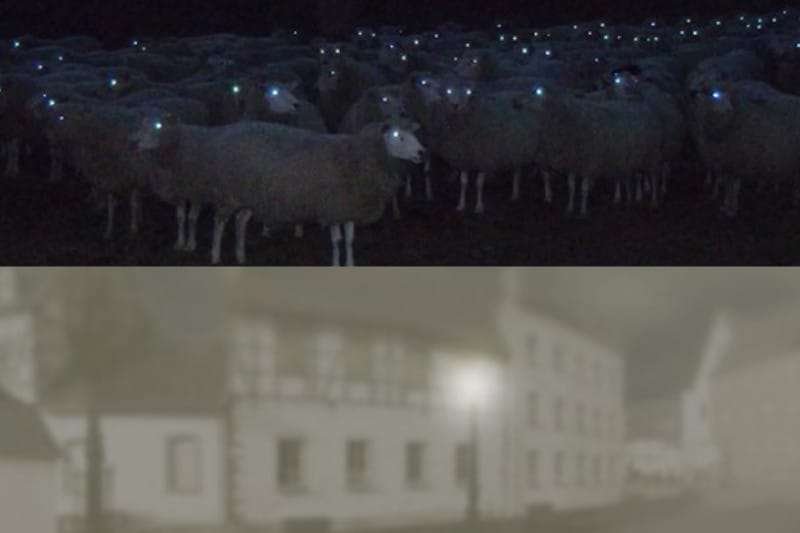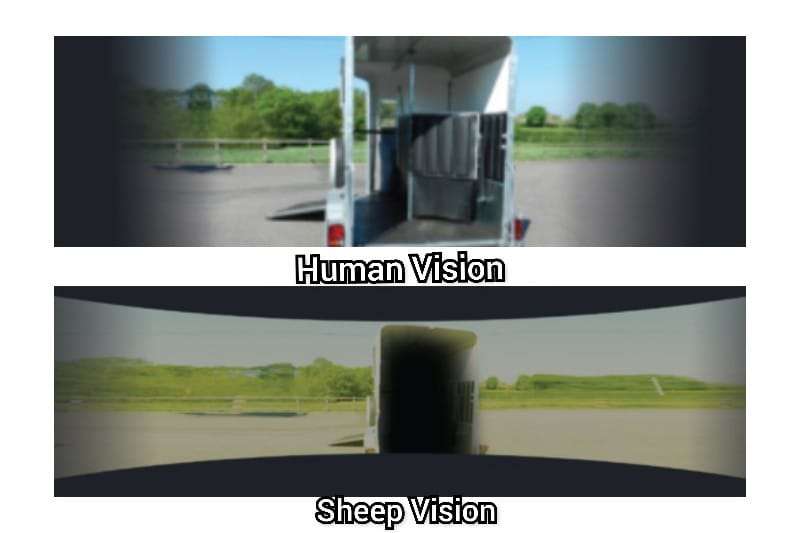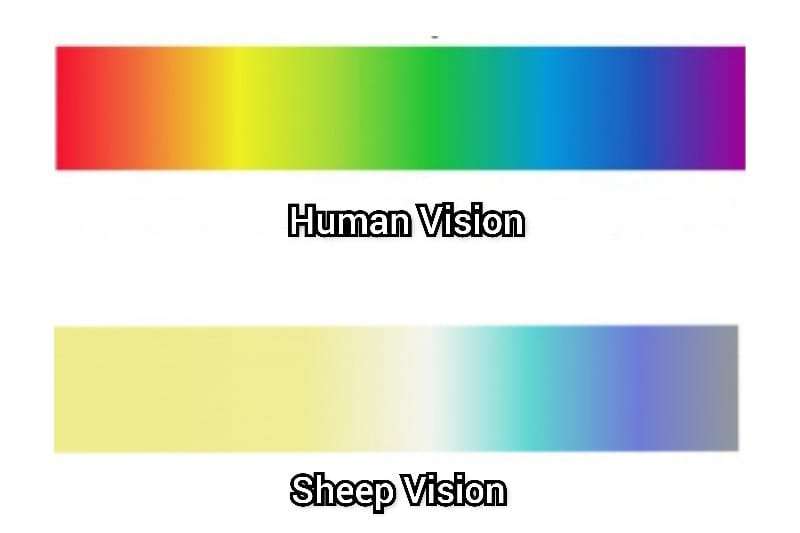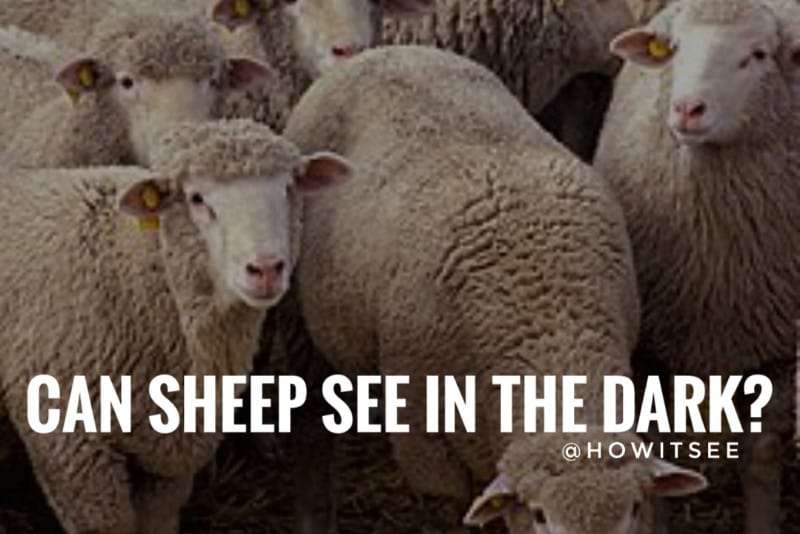Sheep, scientific name Ovis aries, are domestic mammals that have played a significant role in domestication since Mesopotamia. Everyone knows about sheep, goats, and other cattle but have you ever been wondered how they see the world.
Both sheep and goats share the same vision, and in this post, we have explained sheep’s vision. But before proceeding with this, let us answer the question mentioned in the title.
The answer to the question, “Can sheep see in the dark,” is: Yes, sheep can see better in the dark compared to humans. Sheep have tapetum lucidum, a thin reflective membrane in their eyes that reflects even the slightest light onto the retina, allowing them to see better in low light conditions. Also, they have a large size of retina that comprises more rods than cones providing better night vision.
Sheep, goats, and cows can see much better at night than humans. They are diurnal animals, but their eyes are evolved to visually discern in the dark. Later in this post, we have explained more about sheep vision in detail. So, without any further ado, let’s begin.
Can Sheep see in the Dark?
Sheep can see in the dark like other cattle. A sheep’s eye is similar to a human eye; however, the significant difference is in the shape of the retina. They have a retina shaped like a rectangle that focuses on the rods rather than cones.
Rods in the eyes help to perceive the brightness of the light, whereas cones in the eyes assist in recognizing the various color shades in the environment. A human eye is predominately focused on the cones; on the other side, sheep or other cattle eyes tend towards the rods that assist them in witnessing lowlight conditions.

Along with a higher number of rods, sheep also have tapetum lucidum in their eyes. Tapetum Lucidum is a thin membrane present behind the retina.
It reflects even the slightest of light back to the light-sensitive retinal cells for photon-photoreceptor stimulation and enhancing night vision. Many nocturnal animals depend on tapetum lucidum to carry out their night activities; however, cattle, being diurnal, also have this tissue.
Are Sheep blind?
No, sheep are not blind. They have the same eyes as humans. They have a rectangular-shaped retina that offers them a massive peripheral vision of 320-340 degrees of a panoramic field. Below we have attached the image of how they see the world.

Their panoramic field of vision allows them to see predators from any direction; however, it reduces their ability to perceive the depth of vision. Humans have binocular vision, which means our eyesight is more focused on the depth of view rather than the field of vision.
In opposite, sheep have to survive predators; therefore, their eyes are more concentrated on the field of vision. Also, they are farsighted with a slight Astigmatism, a blurry or distorted vision. In a nutshell, they can see far entities like humans but without any clear details.
Can Sheep see color?
Sheep are not completely colorblind and can see different colors. They are dichromats means they have only short and medium wavelength sensitive cones that allow them to distinguish only blue-green colors from wavelength 444 to 553 nm.
In opposition, humans are trichromats and can perceive short, medium, and long wavelength colors, i.e., blue, green, and red. We can perceive and distinguish colors from the 380-720 nm (visible spectrum).

Humans have the upper hand over sheep or other cattle when it comes to differentiating various colors. Sheep see the world mainly in blue, yellow, green, and gray shades. They have red-green colorblindness.
How do Sheep see the world?
Sheep see the world mainly in blue, yellow, and grayish shades. They have a wide range of vision that grants them a panoramic field of 320-340 degrees. They are also farsighted like humans but witness far entities with less detail.
Also, their vision is sensitive to motion. They can easily detect sudden quick motion in their surroundings. It helps them to react quickly against any predator.

According to the research, it is noticed that sheep can remember and recognize up to fifty unique human faces for as long as two years. In addition, the position of sheep’s eyes grants them a wide field of vision by sacrificing the depth of perception.
How far can Sheep see in front of them?
Sheep and horses have the same vision. They can see and focus only up to 20 feet away. After that, their vision becomes hazy. Sheep have 20/30 vision; however, presently, there are no studies that prove exactly how far sheep can see. Also, they have monocular vision means they cannot see as far as humans.
Sheep vision vs Human vision
| Sheep Vision | Human Vision |
| Sheep have a dichromatic vision and can see only blue-green colors. | Humans have a trichromatic vision and can see blue, green, and red colors. |
| They can see in the dark. | We cannot see in the dark. |
| They have monocular vision. | Humans have binocular vision. |
| Sheep cannot see clearly too far. | Humans can clearly see distant objects. |
Here, we have concluded our article on “Can Sheep see in the Dark,” and explain their night vision. We hope you like it. We will be back with another post. Till then, stay tuned with us and read the articles below.
References-
Image Source- Proximal Lighting
Wikipedia
Goats/Sheep Vision by Evergreen
Also Read:

Meet Abhidept (nickname Monty), the visionary founder of How It See, being an engineering student, he’s fueled by an insatiable curiosity about the world around him. He is captivated by an eclectic correlation between animal groups, science, and nature, and this fascination drives his quest for understanding.
After completing his degree, he’s set on a mission to delve deep into the realm of nature, accumulating knowledge to share with you through his writing. In the meantime, he loves to watch anime and read anime.
